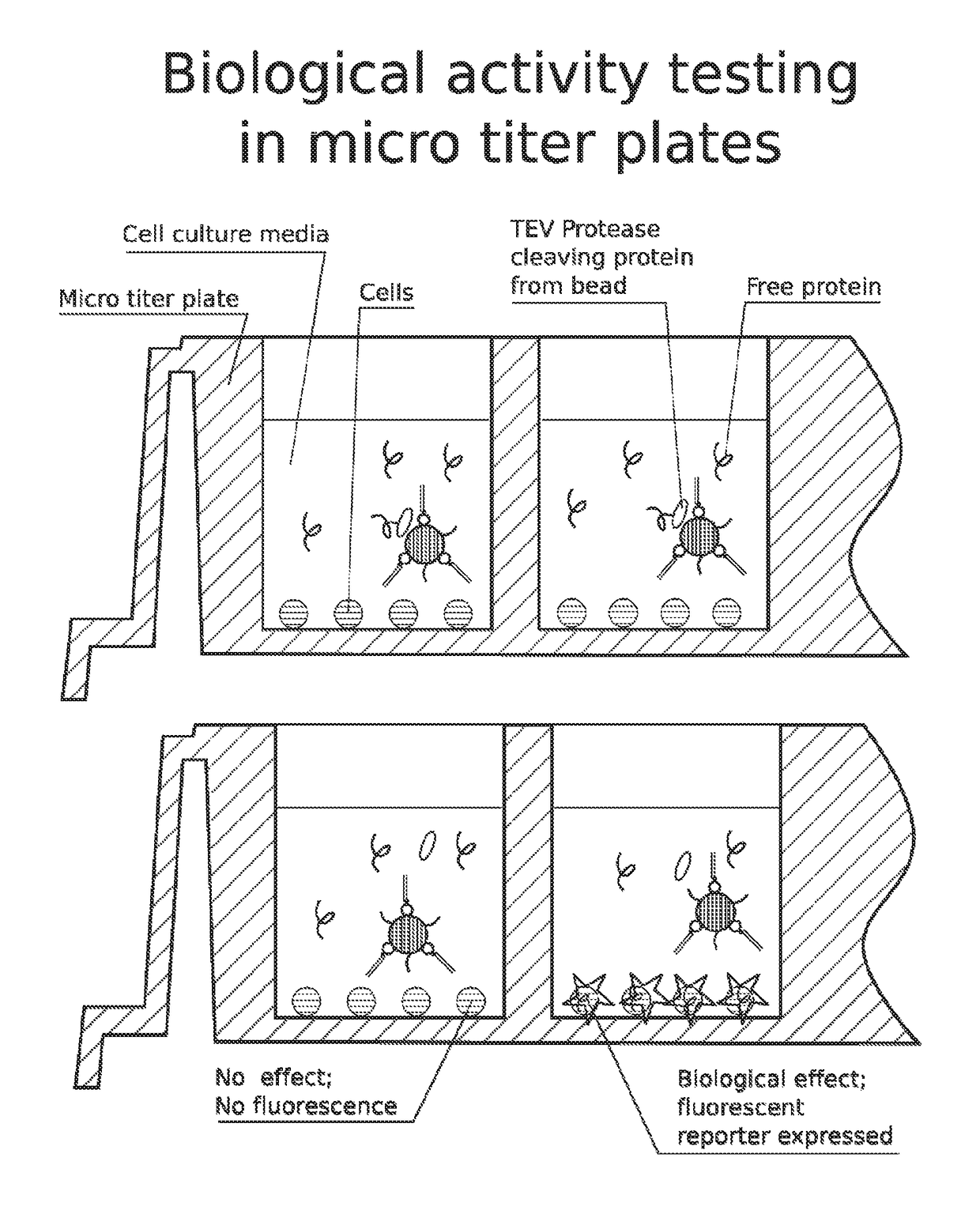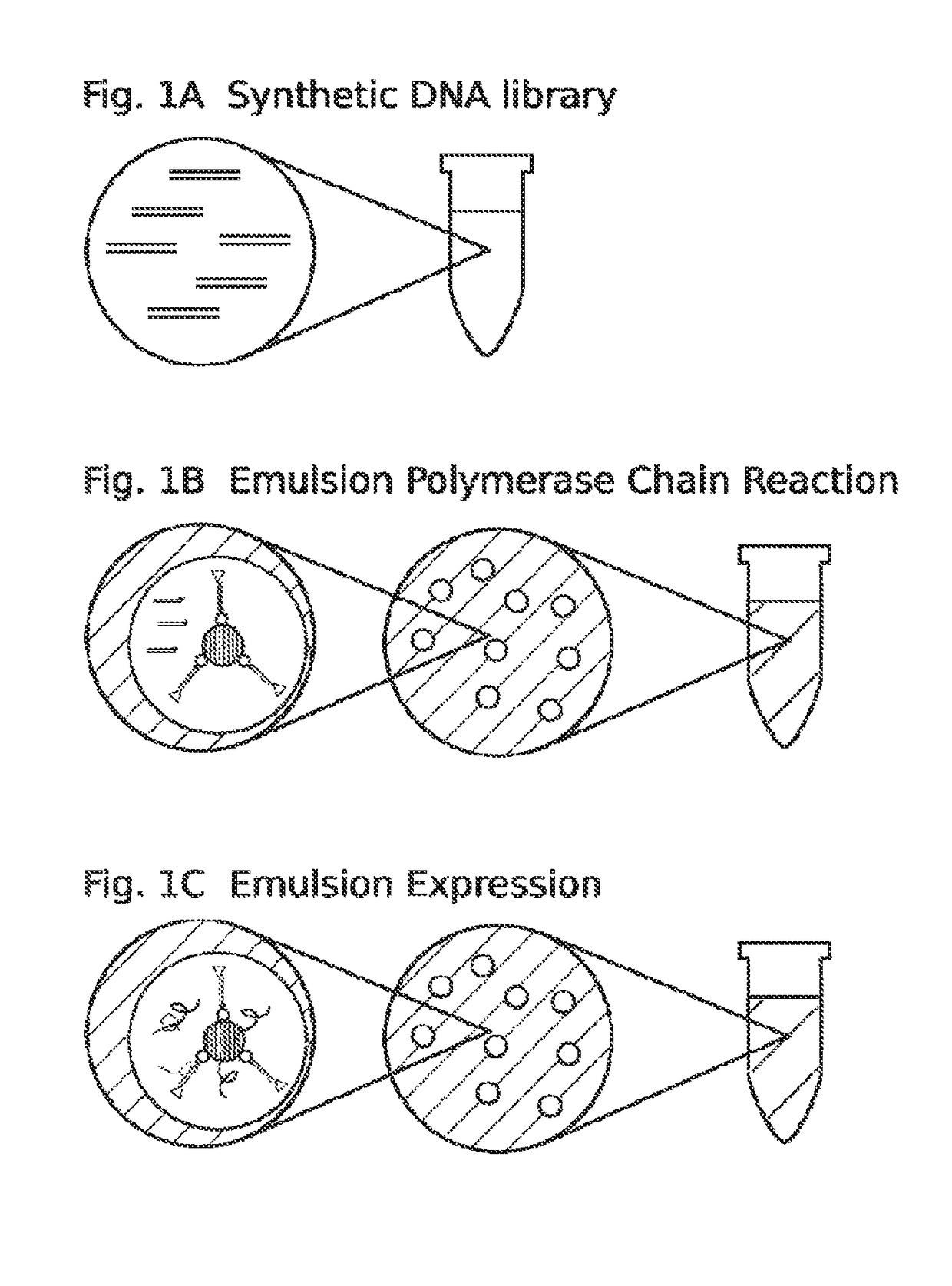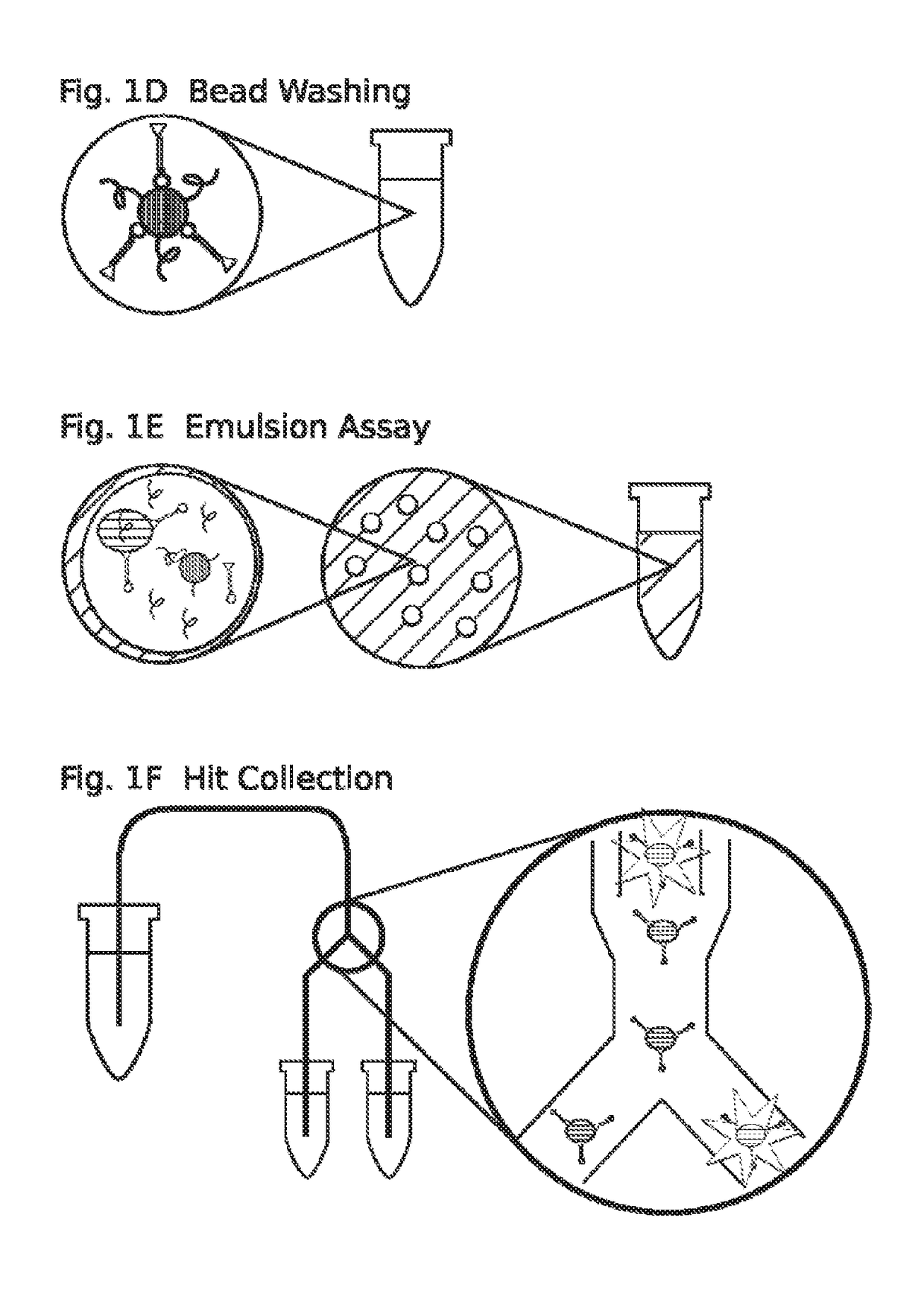High throughput screen for biologically active polypeptides
a polypeptide and high throughput technology, applied in the field of biological and molecular biology, can solve the problems of limited antibody therapeutics, limited method requirements of each given polypeptide, and limitation of the library size that can be used, and achieve the effect of high efficiency and effective separation of individual members
- Summary
- Abstract
- Description
- Claims
- Application Information
AI Technical Summary
Benefits of technology
Problems solved by technology
Method used
Image
Examples
example 1
Screen for Biologically Active Polypeptide in Eukaryotic Cells
[0168]General DNA Bead Tagging of Cells
[0169]Equipment:[0170]thermocycler apparatus (PCR™ machine)[0171]Nanodrop spectrophotometer
[0172]Reagents:[0173]DNA oligonucleotides
[0174]For DNA library construction beads are labeled with the library coding sequences that are amplified from DNA oligonucleotide molecules. Oligonucleotide molecules can be chemically synthesized on site or a obtained from a commercial supplier, such as IDT (see the World Wide Web at (idtdna.com / Home / Home.aspx). In general, degenerate DNA oligonucleotides encoding a peptide library with a forward and reverse universal primer sequence on each end and an ATG at the start site of translation will be used. The basic forward primer includes a 5′ biotin, a spacer, a T7 promoter, a spacer, a Shine-Dalgarno ribosome binding site (RBS), a spacer, and a universal primer sequence. A basic reverse primer includes a T7 termination sequence and a universal primer. S...
example 2
Screen for Apoptosis Inducing Polypeptides
[0271]General DNA Bead Tagging of Cells
[0272]Equipment:[0273]thermocycler apparatus (PCR™ machine)[0274]Nanodrop spectrophotometer
[0275]Reagents:[0276]DNA oligonucleotides
[0277]For DNA library construction beads are labeled with the library coding sequences that are amplifies from DNA oligonucleotide molecules. Oligonucleotide molecules can be chemically synthesized on site or a obtained from a commercial supplier, such as IDT (see the World Wide Web at (idtdna.com / Home / Home.aspx). In general, degenerate DNA oligonucleotides encoding a peptide library with a forward and reverse universal primer sequence on each end and an ATG at the start site of translation will be used. The basic forward primer includes a 5′ biotin, a spacer, a T7 promoter, a spacer, a Shine-Dalgarno ribosome binding site (RBS), a spacer, and a universal primer sequence. A basic reverse primer includes a T7 termination sequence and a universal primer. See, e.g., FIG. 5.
[02...
example 3
Screen for Antimicrobial Peptides
[0372]Library Preparation
[0373]Equipment:[0374]Nanodrop spectrophotometer
[0375]Reagents:[0376]A master DNA library with site-specific randomized variants of the bee venom Melittin, which is optimized for in vitro expression; obtained from DNA 2.0 (see the World Wide Web at dna20.com) and cloned into the pIVEX vector (5 Prime, Inc.).[0377]A raw sub-library amplified from the master library with the Illustra GenomiPhi V2 DNA amplification kit (GE Healthcare)[0378]A linearized sub-library made from the raw sub-library using the Restriction enzyme CLA1 (cut DNA)
[0379]The DNA library was based on the wild-type sequence of Melittin from the honeybee (Apis mellifera), which is: GIGAVLKVLTTGLPALISWIKRKRQQ (SEQ ID NO: 1). To construct the library, residues number 5, 6, 10, 15, 22, 25, and 26 were randomly varied using a degenerate approach, where the corresponding codons were replaced with NNK, where N is any base and K is either deoxyguanosine (G) or deoxyth...
PUM
| Property | Measurement | Unit |
|---|---|---|
| diameter | aaaaa | aaaaa |
| diameter | aaaaa | aaaaa |
| volume | aaaaa | aaaaa |
Abstract
Description
Claims
Application Information
 Login to View More
Login to View More - R&D
- Intellectual Property
- Life Sciences
- Materials
- Tech Scout
- Unparalleled Data Quality
- Higher Quality Content
- 60% Fewer Hallucinations
Browse by: Latest US Patents, China's latest patents, Technical Efficacy Thesaurus, Application Domain, Technology Topic, Popular Technical Reports.
© 2025 PatSnap. All rights reserved.Legal|Privacy policy|Modern Slavery Act Transparency Statement|Sitemap|About US| Contact US: help@patsnap.com



